Cold-war nostalgia – The Nike missile site
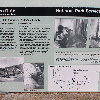 |
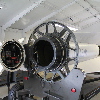 |
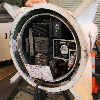 |
 |
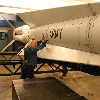 |
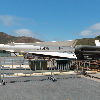 |
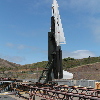 |
One of my hobbies is collecting memorabilia from the Cold War, and visiting sites related to it. I’ve been to see the Titan Missile Museum in Arizona, and took a bike ride up in the San Gabriel Mountains to visit the remains of a Nike missile site there. Since we were in San Francisco, I wanted to visit Golden Gate National Recreation Area, since I’d read that an old Nike missile site there had been restored and turned into a museum.
The Nike missiles were intended to shoot down Russian bombers. The first iteration was the Nike Ajax, which was a slim missile with a conventional warhead. It was intended to shoot down bombers that flew higher and faster than regular anti-aircraft guns could hit. Later, as bombers got faster in the late 1950s, these were replaced with the Nike Hercules, which could fly higher and faster, and could carry a nuclear warhead.
The tour started in the little building where they had a disassembled missile for us to look at. We got to see where the solid-fuel rocket motor was installed, and where the nuclear warhead was mounted. Then we went outside to see the radars and the little building where the controlled the missile. In the days when the site was operational, those were located a couple miles away from the launch pads. Something to do with how the radars tracked the missile for guidance meant that they couldn’t do it well if the radar was right next to the launcher. Of course, when we were in the control trailer, everyone wanted to get a picture with the big red button marked “FIRE”.
The next stop was the building where they assembled the missiles. They had both an Ajax and a Hercules missile on display in there. And then we headed underground to the actual missile magazine. Each site had two magazines, each with six missiles in it. The showed us how the missiles were mounted on rails, and they were really pretty easy to move. In the center, there was a big elevator that could lift one missile up to the launcher above, which they demonstrated for us:
After they raised the missile up, we all came back outside, and they showed us how the launcher would raise the missile up to its launch angle, which was something like 85 degrees. Not quite vertical, since they didn’t want the first-stage booster rocket to fall back down on the launch site.
This was a fun and interesting little bit of Cold War history.

